Last updated on
Discover the possibilities of incorporating a ceiling fan in your kitchen for enhanced comfort and style while maintaining safety and functionality.
The kitchen is often referred to as the heart of the home, where meals are prepared and memories are made. As such, it is important to have a comfortable and functional space that you can enjoy spending time in.
One of the most common questions homeowners ask when it comes to kitchen design is whether or not they can install a ceiling fan in this area. It’s a valid concern since kitchens tend to produce heat, steam, and odors that can make cooking uncomfortable.
So, can you have a ceiling fan in the kitchen? Let’s find out!
What's Inside
Importance of Kitchen Ventilation

Kitchen ventilation is an essential aspect of any kitchen design, and it plays a crucial role in maintaining the air quality and temperature within your home. Proper ventilation helps to remove excess moisture, smoke, cooking odors, and other pollutants that can accumulate in the kitchen during meal preparation.
Without proper ventilation systems like range hoods or ceiling fans installed in your kitchen space, these contaminants can linger for hours or even days after cooking.
In addition to improving indoor air quality by removing harmful pollutants from the environment around you while you cook; proper ventilation also helps keep temperatures down by circulating fresh air throughout your home’s interior spaces. This means that installing a ceiling fan in your kitchen not only provides comfort but also contributes significantly to energy savings as well.
Pros and Cons of Ceiling Fans in Kitchens
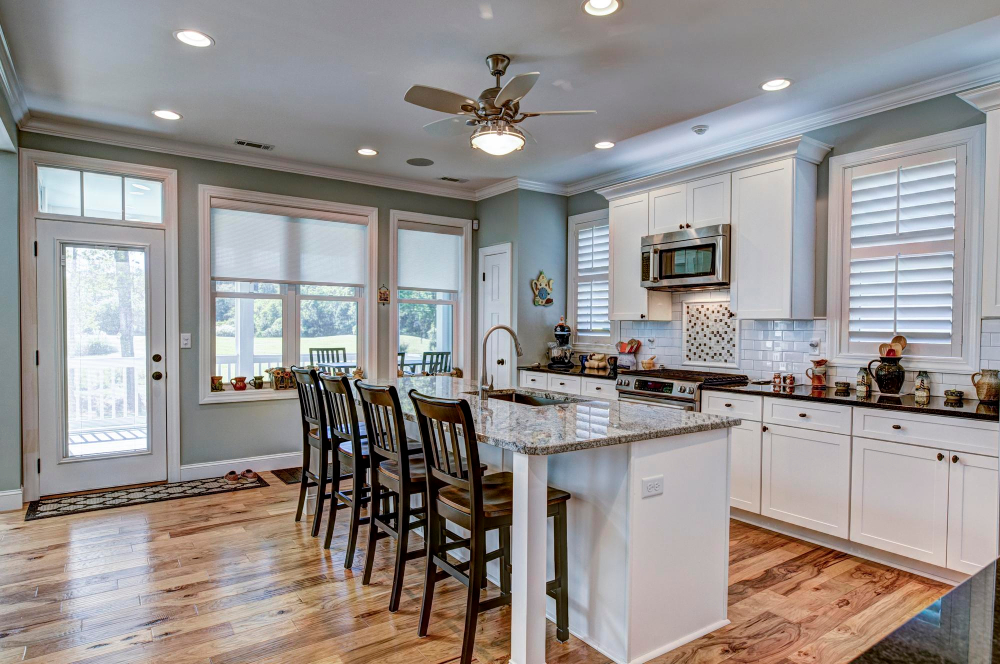
Like any other home appliance, ceiling fans have both advantages and disadvantages that you should consider before making a decision.
Pros:
- Improved air circulation: Ceiling fans help circulate air in your kitchen, which can reduce heat buildup and prevent unpleasant odors from lingering.
- Energy efficiency: Running a ceiling fan is more energy-efficient than using an air conditioner or central heating system.
- Aesthetically pleasing: Kitchen ceiling fans come in various styles that can complement your decor while providing practical benefits.
Cons:
- Safety concerns: If not installed correctly or maintained properly, kitchen ceiling fans can pose safety risks such as fire hazards or injury from falling blades.
- Noise level: Some models may produce noise levels that could be distracting during meal preparation or conversation with family members.
- It’s important to weigh these pros and cons carefully when deciding whether to install a kitchen ceiling fan. Consider factors such as the size of your space, ventilation needs, budget constraints before making this investment.
Types of Kitchen Ceiling Fans
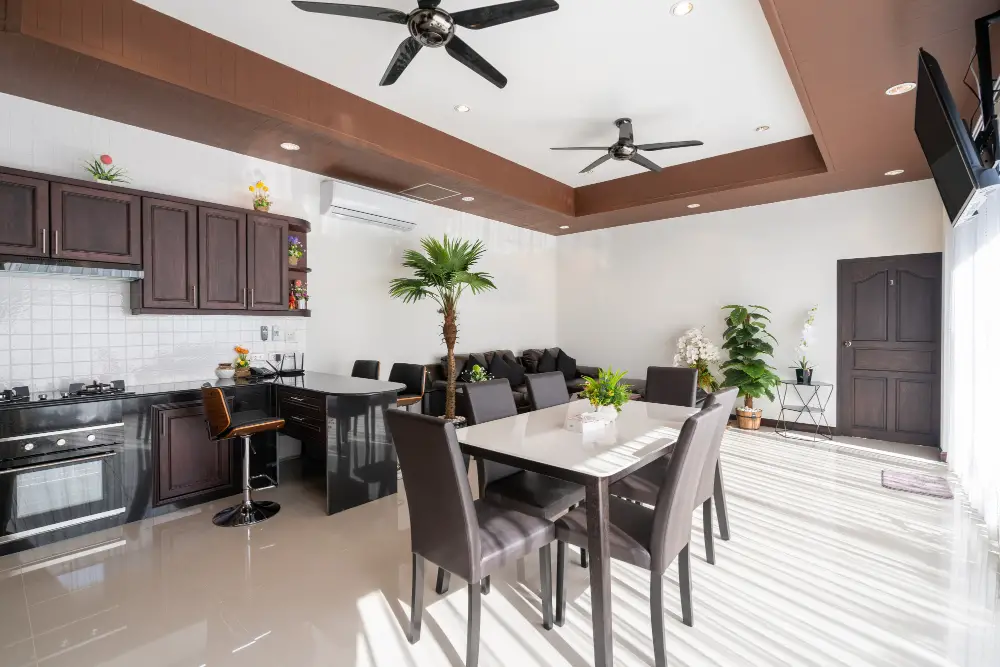
The most common ones include standard ceiling fans, low-profile or hugger fans, and dual-motor or double-headed fans.
Standard Ceiling Fans: These are the most popular type of ceiling fan and come in various sizes and styles. They typically have three to five blades that rotate clockwise or counterclockwise depending on the season.
Low-Profile/Hugger Fans: These types of fans are ideal for kitchens with low ceilings as they sit flush against them. They usually have shorter downrods than standard models but still provide adequate airflow.
Dual-Motor/Double-Headed Fans: If you’re looking for something unique, then this type of fan is worth considering. It features two motors that power two sets of blades independently from each other providing more air circulation than traditional single motor units.
Benefits of a Kitchen Ceiling Fan
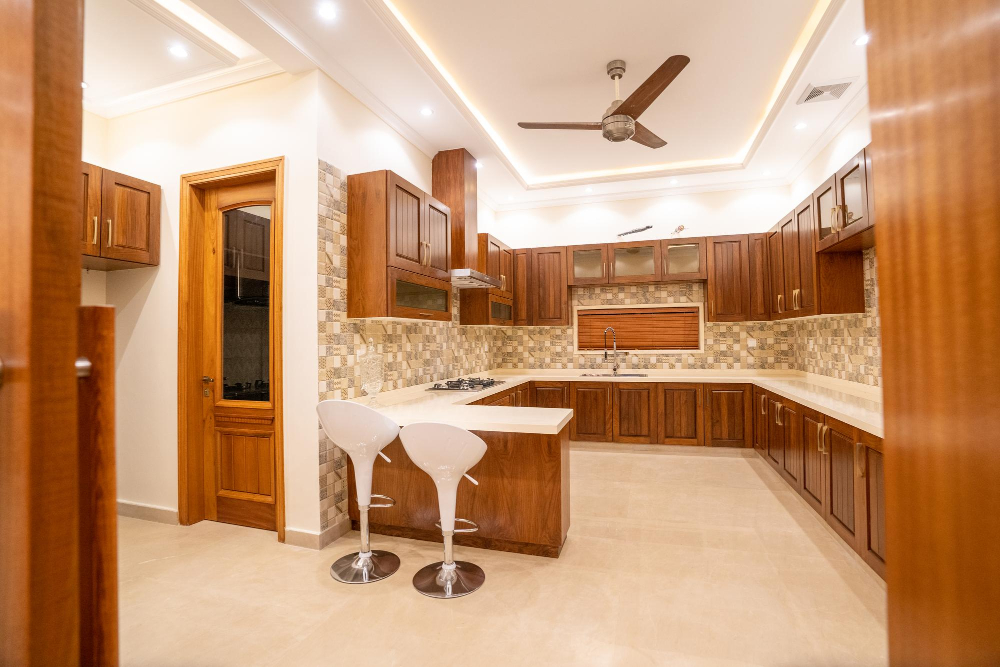
One of the most significant advantages is improved air circulation, which helps to eliminate cooking odors and smoke that can linger in your home. A ceiling fan also helps to reduce humidity levels by drawing moisture out of the air, preventing mold growth and other issues caused by excess moisture.
Another benefit of a kitchen ceiling fan is its ability to help lower energy costs. By circulating cool air throughout your kitchen, you may be able to rely less on your HVAC system or even turn it off altogether during mild weather conditions.
Ceiling fans are also an excellent way to keep insects at bay while cooking or dining outdoors in covered patios or porches attached directly from kitchens as they create a breeze that keeps bugs away from food and people alike.
Lower Your Energy Costs

Ceiling fans use less electricity than air conditioning units, and they are more efficient at circulating cool air throughout the room. By using a ceiling fan in conjunction with an AC unit or on its own, you can reduce your reliance on expensive cooling systems and save money on utility bills.
Moreover, some modern kitchen ceiling fans come equipped with energy-efficient features such as LED lighting and DC motors that consume less power while providing optimal performance. These features not only help to cut down electricity usage but also contribute to reducing carbon footprint.
However, keep in mind that running a ceiling fan when no one is around will not save you any money; instead, it will increase your electric bill unnecessarily. Therefore always turn off the fan when leaving the room or house for an extended period.
Keep Insects At Bay

Flies, mosquitoes, and other flying pests are often attracted to food odors and moisture in the air. A ceiling fan can create enough airflow to discourage these pesky intruders from hovering around your cooking area.
However, it’s important to note that not all ceiling fans are created equal when it comes to insect control. Some models come with built-in bug repellent features such as ultraviolet lights or essential oil diffusers that emit scents like citronella or eucalyptus which repel bugs naturally.
If you’re looking for a more natural way of keeping insects away while enjoying cool breezes from your kitchen ceiling fan, consider using essential oils instead of chemical sprays or pesticides. You can add a few drops onto cotton balls and place them near the blades so they get dispersed into the air as they spin.
Downsides of Using a Ceiling Fan in Kitchen

One of the main concerns is safety. If your ceiling fan is too low or not installed properly, it could pose a risk for injury while cooking or moving around in the kitchen.
Another downside of using a ceiling fan in the kitchen is that it may not effectively remove all odors and smoke from cooking. While they do help circulate air and reduce heat buildup, they don’t have an exhaust function like range hoods do.
If you have high ceilings in your kitchen, you’ll need to make sure that you choose an appropriate downrod length for your ceiling fan installation. Otherwise, it may not provide enough airflow or become noisy due to wobbling.
Lastly but importantly – cleaning! Kitchen ceilings tend to accumulate grease and grime over time which can stick on blades making them difficult clean regularly without proper maintenance routine.
Kitchen Ceiling Fan Styles
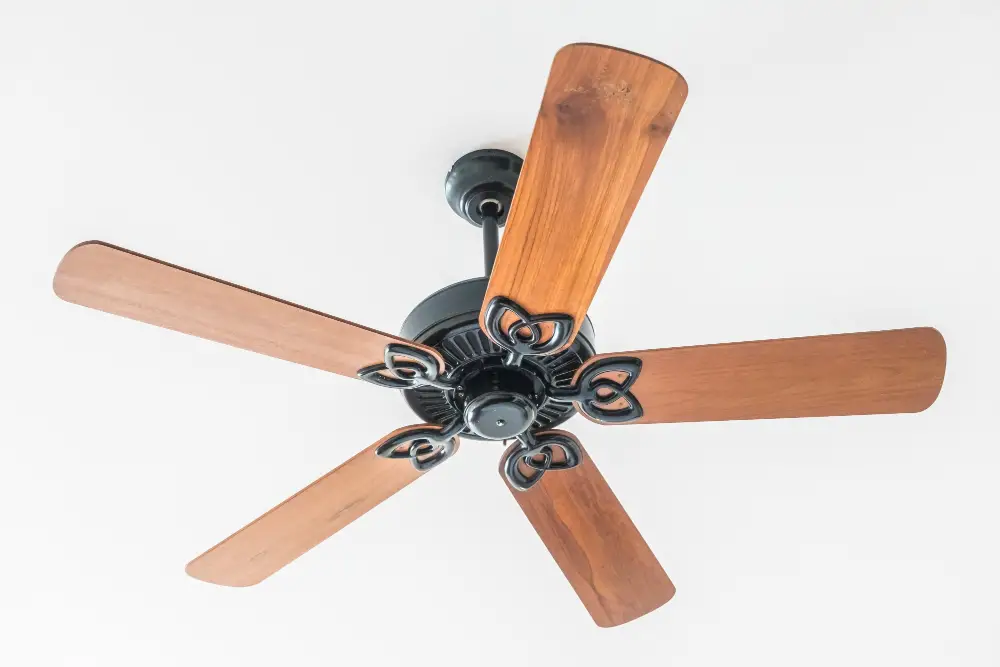
From traditional to modern, rustic to industrial, you can choose a style that suits your taste and blends in with the overall look of your kitchen.
If you have a classic or vintage-style kitchen, consider installing an ornate ceiling fan with intricate details on the blades and motor housing. For contemporary kitchens with clean lines and minimalistic designs, opt for sleek-looking fans made of stainless steel or brushed nickel finish.
For those who prefer a rustic feel in their kitchens – perhaps one inspired by farmhouse aesthetics – wooden-bladed ceiling fans would be perfect. These types of fans come in different finishes such as distressed wood or reclaimed barnwood which add character to any space.
Industrial-style kitchens may benefit from metal-bladed ceiling fans featuring exposed hardware for an edgy look while tropical-themed spaces could use bamboo blade models for added flair.
What to Consider Before Putting a Ceiling Fan in Your Kitchen

First and foremost, you need to ensure that the ceiling height is adequate for a safe installation. The minimum recommended distance between the blades of the fan and any surface should be at least 7 feet from the floor or 8-9 feet if possible.
Another important consideration is choosing an appropriate size for your kitchen space. A small room may require a smaller blade span than larger kitchens with higher ceilings.
You also want to think about how much light you need in your kitchen as some fans come equipped with built-in lighting fixtures while others do not have any lights at all.
It’s essential to choose a style that complements your existing decor and color scheme while providing optimal functionality. You can opt for traditional designs or modern styles depending on what suits best with other elements of design in your home.
Lastly, make sure that you hire professional electricians who are experienced in installing ceiling fans safely without damaging electrical wiring or causing accidents during installation.
Ceiling Height & Downrod Length
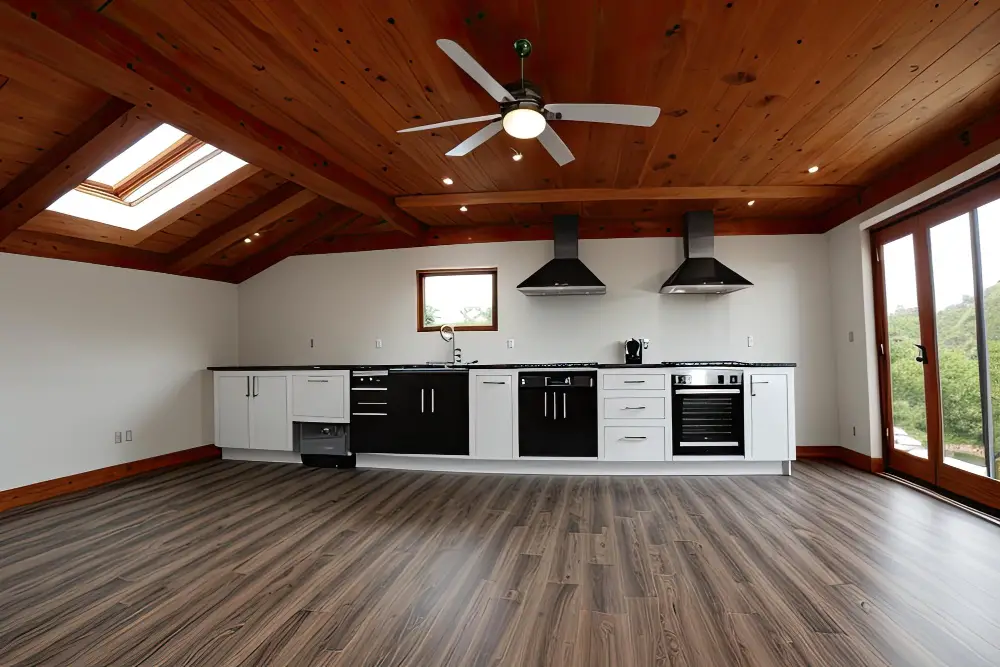
If you have high ceilings, you will need a longer downrod length for proper installation. A downrod is the metal pipe that connects the motor housing of the fan to its mounting hardware and allows it to hang from your ceiling at an appropriate distance.
The standard recommendation for optimal airflow efficiency is that there should be at least 8-9 feet between the floor and blades of your ceiling fan. For every foot above this range, add six inches or more in downrod length depending on how high up you go.
If you have low ceilings (less than eight feet), flush mount fans are recommended as they do not require any additional space between blades and floors. However, if there’s enough clearance space available with higher ceilings (nine feet or more), then using a longer down rod can help improve air circulation while also adding visual appeal.
Ceiling Fan Size and Placement

The size of the fan you choose will depend on the square footage of your kitchen. A general rule of thumb is that for every 100 square feet, you should have a ceiling fan with a blade span of at least 36 inches.
Placement is also important when it comes to installing a ceiling fan in your kitchen. You want to make sure that there’s enough clearance between the blades and any cabinets or other obstacles in the room.
Ideally, there should be at least two feet between the blades and any walls or cabinets.
Another factor to consider when placing your ceiling fan is its distance from other light fixtures or appliances such as range hoods which can interfere with airflow if placed too close together.
Safety Concerns and Precautions

Ceiling fans can pose potential hazards if not installed correctly or used improperly. For instance, the blades of the fan could come loose and fall off while spinning, causing injury or damage to property.
To avoid such accidents from happening, ensure that you hire an experienced electrician who is familiar with ceiling fan installation procedures. They will help you choose the right size and type of ceiling fan for your kitchen space and install it securely.
Make sure that all electrical connections are properly grounded before turning on the power supply to prevent electrocution risks. It’s also essential to keep children away from running fans as they may stick their fingers into them out of curiosity.
Lastly, always follow manufacturer instructions when cleaning or maintaining your kitchen ceiling fan regularly. This includes dusting off accumulated dirt on blades using a soft cloth without touching any moving parts.
Lighting
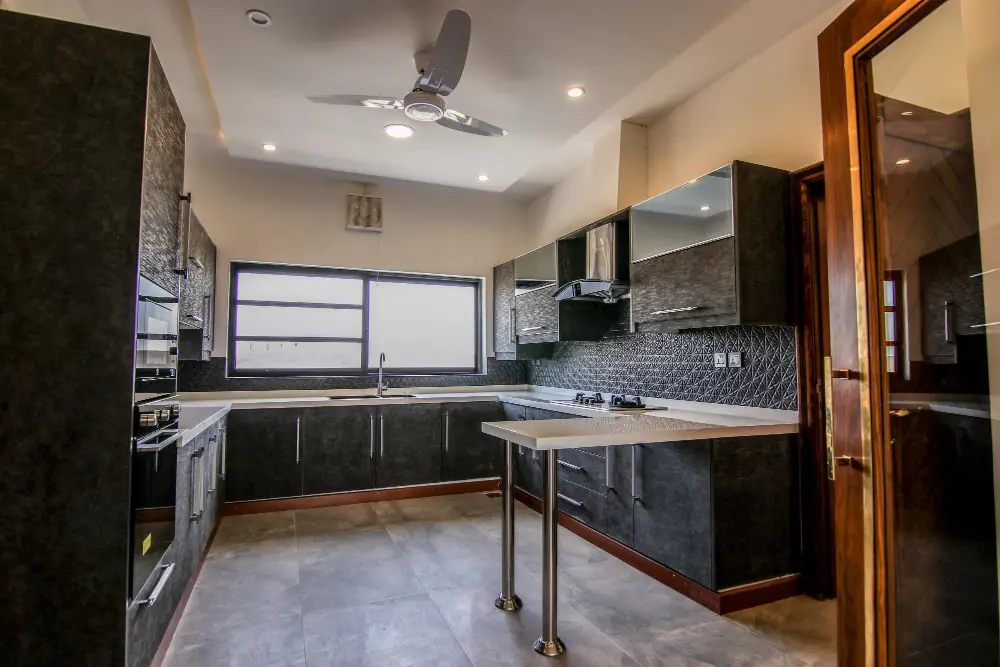
Some ceiling fans come with built-in lights that can provide additional illumination for your kitchen. However, if you already have sufficient lighting in your kitchen, you may want to opt for a fan without lights or one that allows you to remove the light kit altogether.
It’s also worth noting that some ceiling fans are designed specifically for use with dimmer switches. This feature can be particularly useful when entertaining guests or creating ambiance while cooking dinner.
When choosing a ceiling fan with integrated lighting, make sure it complements the existing fixtures and style of your kitchen. You don’t want it to clash or look out of place.
Incorporating proper lighting into your overall design plan is crucial when installing a new ceiling fan in the kitchen area.
Energy Efficiency and Savings

They use less energy than air conditioning units, making them an eco-friendly option for homeowners who want to reduce their carbon footprint. Ceiling fans can help circulate cool air during the summer months and warm air during winter, which means you won’t have to rely on your HVAC system as much.
When choosing a kitchen ceiling fan with energy efficiency in mind, look for models that come with Energy Star certification. These types of fans meet strict guidelines set by the US Environmental Protection Agency (EPA) regarding energy consumption without compromising performance or style.
Another factor that affects the efficiency of your kitchen ceiling fan is its size relative to the room’s dimensions. A small fan in a large space will not be effective at circulating enough air while an oversized one may consume more power than necessary leading up higher bills.
Installation Process
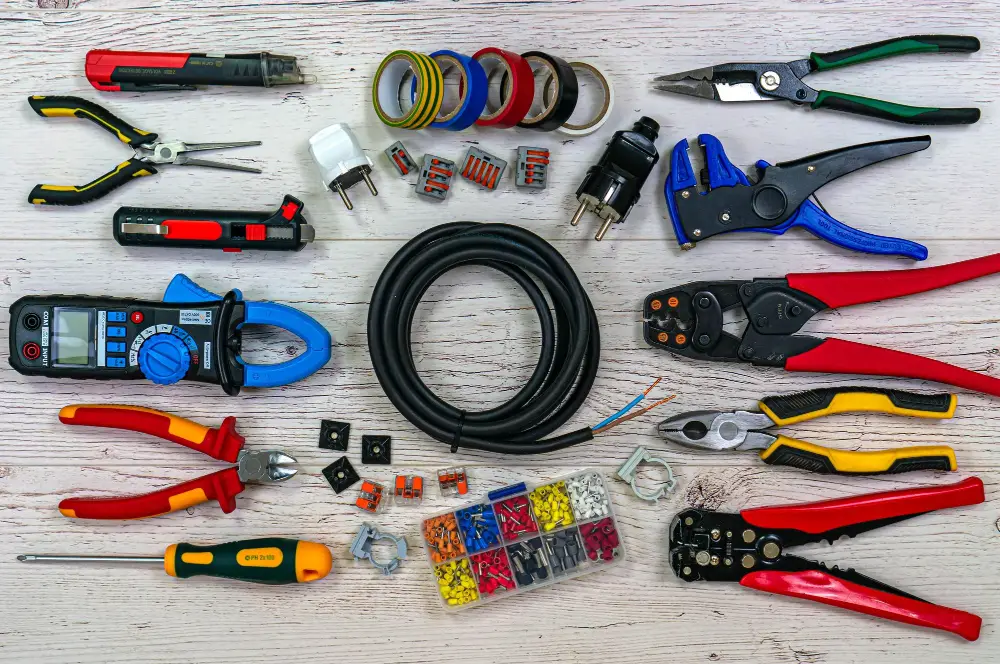
The installation process for a kitchen ceiling fan is similar to that of any other room in your home. However, there are some additional considerations that need to be taken into account.
Firstly, it’s important to ensure that the electrical wiring and circuitry can handle the load of an additional appliance like a ceiling fan. If not, you may need an electrician’s help before proceeding with installation.
Secondly, consider where exactly you want your new kitchen ceiling fan placed and whether or not there is enough clearance from cabinets or other fixtures such as lights or vents.
Thirdly, make sure all necessary tools are available before starting work on installing the unit itself – this includes screwdrivers (both flathead and Phillips), pliers (needle-nose), wire strippers/cutters if needed depending on wiring type used by manufacturer instructions provided with product purchase).
Ceiling Fan Cleaning and Maintenance
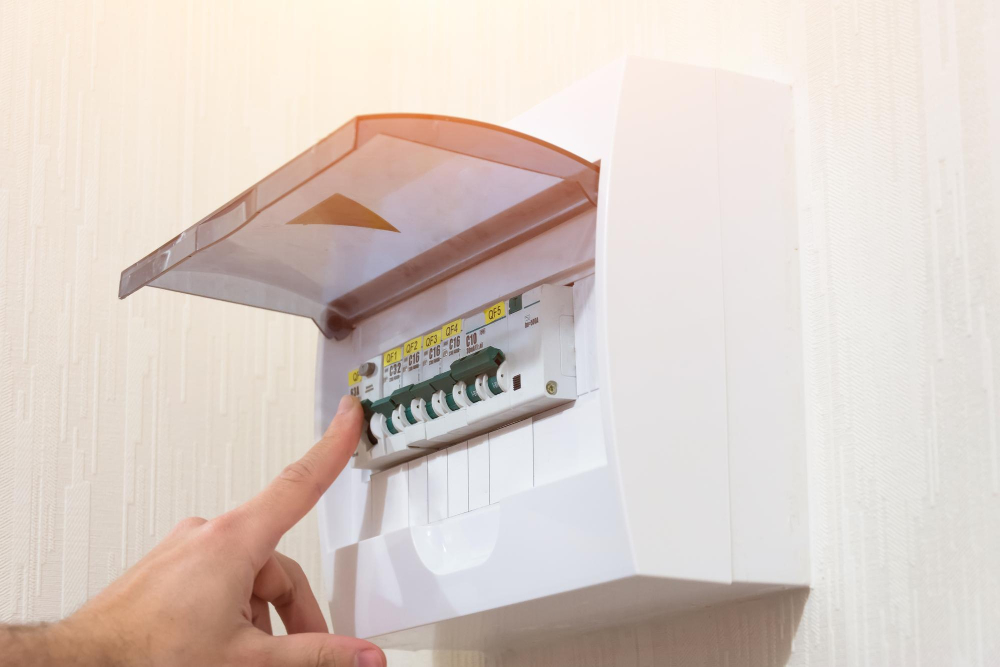
Over time, dust and dirt can accumulate on the blades of your ceiling fan, which can reduce its efficiency and even cause it to wobble or make noise. To avoid this problem, you should clean your ceiling fan at least once every three months.
To clean your kitchen ceiling fan effectively:
- Turn off the power supply: Before you start cleaning the blades of your ceiling fan in the kitchen, turn off its power supply from both wall switch as well as circuit breaker.
- Use a ladder: Climb up on a sturdy ladder that is tall enough for you to reach all parts of the blade without overstretching yourself.
- Dusting: Using an old pillowcase or microfiber cloth cover each blade individually with one hand while using another hand for wiping down accumulated dust gently.
- Clean other parts too- Clean light fixtures attached with it along with motor housing
- Use mild detergent solution – If there are stubborn stains use mild detergent solution mixed in water (avoid harsh chemicals)
- Dry thoroughly – After washing dry everything completely before turning back on
Alternative Ventilation Solutions
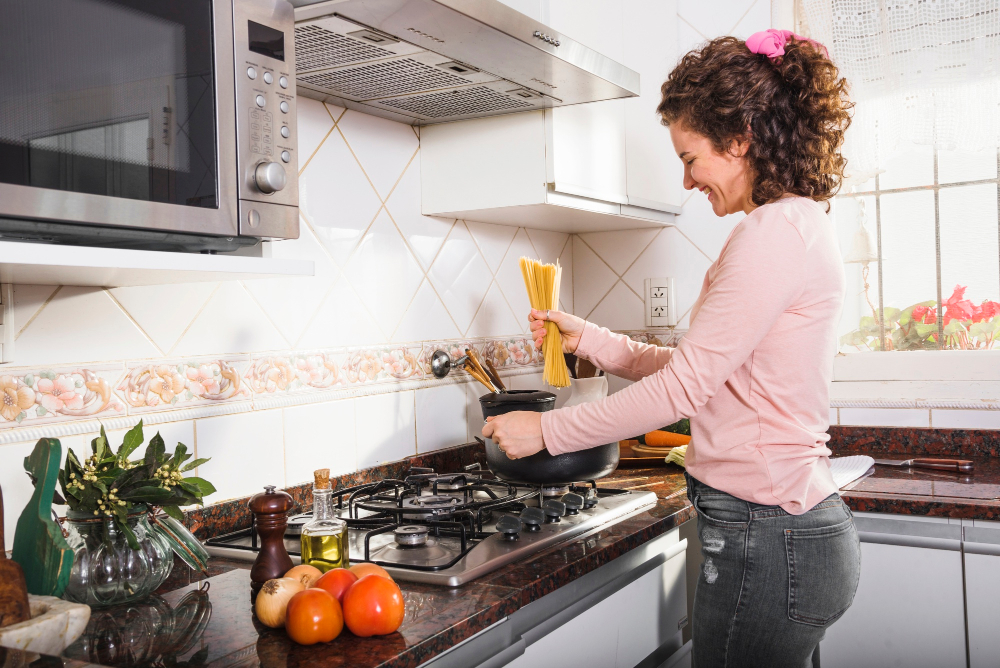
One option is to install an exhaust hood over your stove or range. These hoods work by sucking up steam, smoke, and odors from cooking and venting them outside through ductwork.
Another solution is to use a window fan or portable air conditioner unit. While these options may not be as effective as a ceiling fan at circulating air throughout the entire room, they can still provide some relief from heat buildup.
It’s important to note that while alternative ventilation solutions may be useful in certain situations, they do have their limitations. For example, exhaust hoods require proper installation and maintenance to function effectively; otherwise they could become clogged with grease or other debris which could pose safety hazards such as fire risks.
Tips to Help Keep Your Kitchen Cool

While a ceiling fan can help circulate air and keep you cool, there are other tips you can follow to make your kitchen more comfortable during meal prep. One of the easiest ways is by keeping your windows open or using an exhaust fan to remove excess heat and steam from cooking.
Another tip is to use light-colored curtains or blinds on your windows as they reflect sunlight instead of absorbing it like darker colors do. This will help keep the temperature down in your kitchen while still allowing natural light into space.
You may also want to consider investing in a portable air conditioning unit if you live in an area with high temperatures or humidity levels that make cooking unbearable without proper cooling measures.
Try not to overcrowd countertops with appliances as this will generate additional heat that could raise temperatures even further. Instead, store small appliances away when not needed so they don’t add unnecessary warmth while preparing meals.
Blades and Shapes Matter
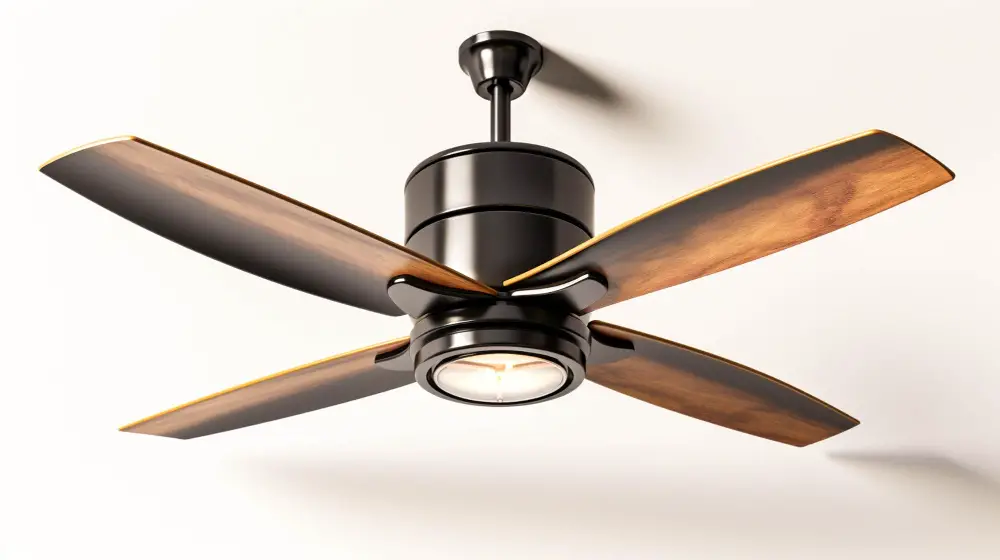
The number of blades on a ceiling fan can range from two to nine, with most models having three or four. Generally speaking, more blades mean less airflow but quieter operation.
On the other hand, fewer blades result in more airflow but louder noise.
The shape of the blade also plays an essential role in how much air is circulated throughout your kitchen space. Straight-edged or flat-shaped fans tend to move air faster and create stronger breezes than curved-blade designs that produce softer gusts.
It’s worth noting that some manufacturers offer reversible blade options where one side has a different finish or color than another side so you can switch up your decor without replacing the entire unit.
Recommended Ceiling Fans for Kitchens
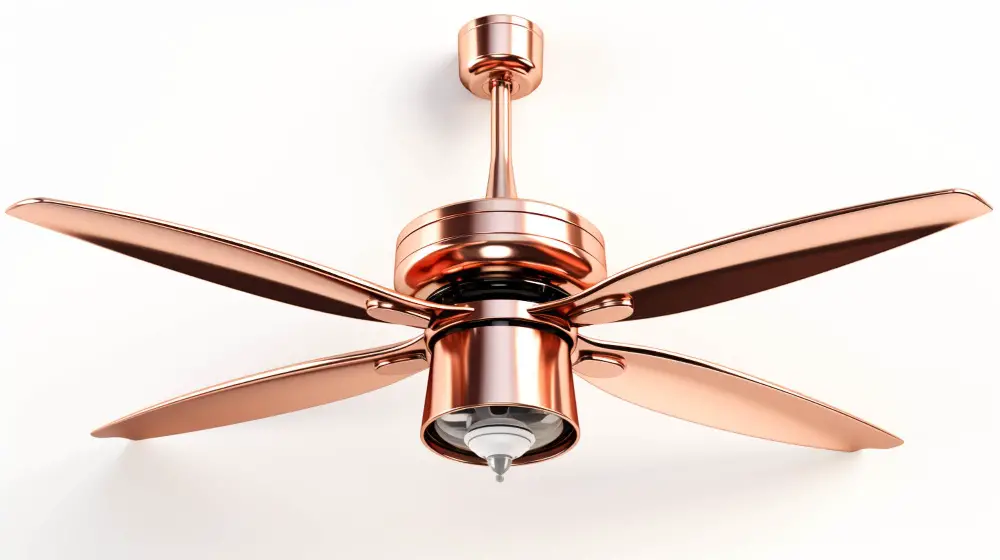
You want a fan that is not only functional but also stylish and safe. Here are some recommended ceiling fans for kitchens:
1. Hunter Builder Deluxe – This classic design features five blades and a powerful motor that can circulate air effectively in large kitchens.
2. Minka-Aire Light Wave – This sleek and modern design has an LED light kit, making it perfect for those who need extra lighting in their kitchen.
3. Emerson Carrera Grande Eco – With its energy-efficient DC motor, this fan is ideal if you’re looking to save on your electricity bill while keeping your kitchen cool.
4. Casa Vieja Habitat Brushed Steel Hugger Ceiling Fan – If you have low ceilings or limited space above the cooking area, this hugger-style ceiling fan will fit perfectly without sacrificing style or function.
5.Hunter Apache Wi-Fi Enabled Smart Ceiling Fan-This smart home compatible model allows voice control through Alexa or Google Assistant which makes adjusting speed easier than ever before!
Remember when selecting a new ceiling fan; ensure it matches with other fixtures in the room such as cabinets’ color scheme so that everything looks cohesive together!
FAQ
Should ceiling fan be placed in kitchen?
Yes, placing a small ceiling fan in the kitchen is beneficial as it helps eliminate smells, smoke, and stagnant air while providing a comfortable and modern working environment without interrupting the cooking process.
Can you have a fan in a kitchen?
Yes, you can have a fan in a kitchen, but the airflow requirements may differ from those in a bathroom.
What type of fan is suitable for kitchen?
A suitable fan for a kitchen depends on the size of the space, with compact or box fans for smaller kitchens and tower or pedestal fans for larger kitchens.
Can you use a ceiling fan instead of a range hood?
Yes, ceiling fans can be used instead of a range hood as they are equally effective at dissipating smoke and odors without occupying extra space.
How can a ceiling fan affect the performance of a kitchen range hood?
A ceiling fan can affect the performance of a kitchen range hood by disrupting airflow, potentially reducing the hood’s efficiency in removing cooking odors and contaminants.
What factors should you consider when choosing a ceiling fan for your kitchen?
When choosing a ceiling fan for your kitchen, consider factors such as size, style, airflow efficiency, energy efficiency, noise, and compatibility with the kitchen’s design.
Are there any safety concerns when installing a ceiling fan in a kitchen setting?
Safety concerns when installing a ceiling fan in a kitchen setting include ensuring proper clearance, distance from cooking appliances, and secure installation to avoid hazards.




